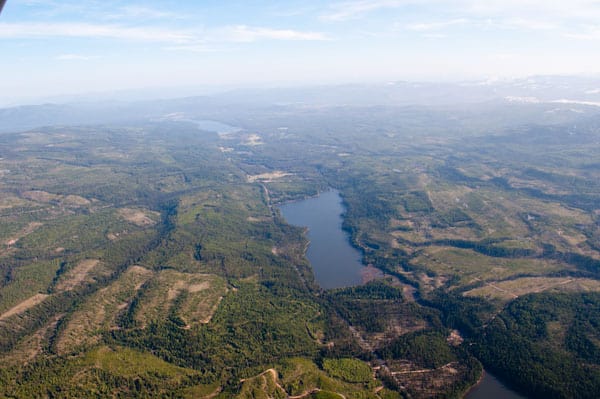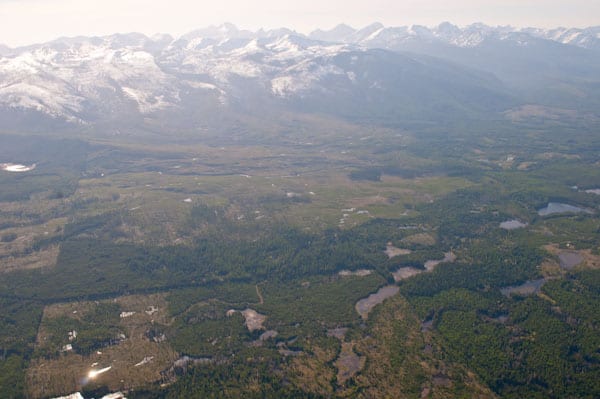This statement was release yesterday:
The Center for Biological Diversity is a founding member of the Four Forests Restoration Initiative. The Center co-founded, participates in and supports the Initiative as a vehicle for corrective ecological restoration treatments that lead to the re-establishment of climate-entrained fire regimes and native biological diversity across landscapes dominated by ponderosa pine forests in northern and eastern Arizona.
The Four Forests Restoration Initiative envisions deploying a patchwork of ecological restoration treatments in ponderosa pine forest landscapes to create conditions that reduce the potential for large-scale, stand-replacing fires, that sustain native biological diversity, and that, across much of the landscape, allow natural fire to safely resume its keystone role of regulating ecosystems structure and composition over time.
The viability of such an effort hinges in large part on the ability of a contractor to deploy a range of high-quality, cost-efficient treatments. That contractor must process small diameter trees in an economically viable way, and it must be financially and operationally capable of adjusting treatments to avoid unforeseen or undesirable ecological impacts, like population-scale losses of canopy-dependent species. The viability of ecological restoration also depends on the Forest Service’s ability, in cooperation with its collaborators, to detect, adjust to and avoid unforeseen, undesirable ecological effects. This requires a robust, transparent and responsive monitoring and adaptive management program that, despite legal requirements, has so far proven elusive in southwestern national forests.
For these reasons, the Center for Biological Diversity has long supported the economic model proposed by Arizona Forest Restoration Products (AZFRP). Grounded in proven technologies and markets, the AZFRP proposal was focused on the economically viable utilization of small-diameter trees and promised the financial capacity to deploy a full range of treatments, as ecologically appropriate. The strategic partnership developed by AZFRP with the most proven northern Arizona restoration thinning professionals promised high-quality woods work. AZFRP’s proposal included a substantial financial commitment for ecological monitoring and up to $500,000 per year for 10 years. AZFRP’s long-standing engagement in the collaborative process for more than six years has demonstrated a commitment to forging agreement, building new partnerships among traditional adversaries, and ensuring the overall success of the Four Forests Restoration Initiative’s ecological goals.
On Friday, May 18, the U.S. Forest Service announced that it had awarded to Montana-based Pioneer Associates a stewardship contract to cut mostly small-diameter trees across 300,000 acres of national forest land in northern Arizona. The tree-cutting is intended to implement part of the Four Forests Restoration Initiative. In light of the above-described rationale, and for reasons listed below, the Center for Biological Diversity believes the U.S. Forest Service made the wrong decision. Little is known about Pioneer Associates’ plan, but what little is known points to a strategy that, from economic, ecological, socio-political, and ethical standpoints, raises serious questions about its merits relative to competing bids.
A $9-million loss to taxpayers
The Forest Service walked away from $9 million in its award to Pioneer Associates. Pioneer offered the Forest Service $6.3 million; Arizona Forest Restoration Products (AZFRP) offered a total of $15 million. This $9 million loss to taxpayers comes at a time when many funding needs for Four Forests Restoration Initiative are likely to remain unmet. This may for example come at the cost of activities critical to biodiversity conservation, like ecological monitoring, and riparian and spring restoration that have traditionally been difficult to fund.
No money for monitoring
The Forest Service walked away from ecological monitoring funds. AZFRP specifically offered the Forest Service $5 million for monitoring across 10 years. Pioneer apparently didn’t even address monitoring funding. Concurrent with its rejection of AZFRP’s offer, the Forest Service continues to cite a lack of funding for its ongoing failure to monitor threatened and endangered species populations in Arizona national forests. Since the Mexican spotted owl’s recovery plan was issued in 1995, the Forest Service, despite clear legal obligations, has routinely refused to monitor owls to understand of population trends and responses to management. As regional forest cover losses accumulate with mega-fires and ecological restoration, the need for that knowledge is more important than ever; yet, consistent with its past behavior, the Forest Service in this case has squarely rejected an opportunity to finally begin collecting that critical information.
Unproven technology for the worst fire hazards
Pioneer’s strategy relies on being able to convert small trees, branches and tree tops into cellulosic bio-diesel. Cellulosic bio-diesel technology is experimental and unproven; we are aware of no examples where it has ever been shown to be feasible in commercial applications. Small trees, tree tops and branches are the least valuable and most flammable material to be removed from the woods, and the contract is expected to generate hundreds of thousands of tons of it annually. Failure to address this material will sharply increase fire hazard and saddle the public with resulting treatment or fire suppression costs; by betting on Pioneer’s unproven, experimental bio-diesel technology, the Forest Service is gambling with exactly that outcome.
Risky business, global markets
Pioneer’s strategy also relies on being able to compete in global markets against Asian furniture manufacturing that uses high-grade timber and third-world wages. The demise of America’s southeastern furniture industry, even with its reliance on plantation wood and minimum-wage labor, illustrates this challenge. We are skeptical that making products from high-cost, low-yield, small-diameter ponderosa pine with federally-mandated wages can compete against Asian imports or, as a business prospect, attract necessary investment. In contrast, competing bids relied on proven technologies in well-established markets. At stake is the ability to deploy restoration treatments; here, the Forest Service again bets on a risky utilization scheme rather than proven business models.
No commitment to collaboration
Representatives of Pioneer have occasionally attended Four Forests Restoration Initiative monthly meetings, but have largely avoided engagement in difficult negotiations about key issues whose resolution has turned the Four Forests Restoration Initiative into an actual program. Pioneer’s actions suggest that they view the Four Forests Restoration Initiative as little more than a vehicle affording access to large-scale timber sales not previously offered by the USFS. Ecological restoration appears to be an afterthought and collaboration a procedural box to be checked on the way to a wood contract. By selecting Pioneer, the Forest Service undermines the social license that it demanded from members of the Four Forests Restoration Initiative and casts even more doubt on the agency’s willingness or ability to engage in collaborative ecological restoration.
A federal-industry revolving door
Pioneer is represented by Marlin Johnson, a retired regional silviculturalist for the Forest Service in Arizona and New Mexico. In his federal capacity Johnson was a liaison to Pioneer’s timber sale inquiries. Within a year of retirement, Johnson was representing Pioneer’s inquires to the same office in which he earlier worked. In his federal capacity Johnson was also privy to the business plans of bidders that Pioneer would later compete against. Finally, over the concerns of staff and other agencies, Johnson, during his time at the Forest Service, advanced a “reinterpretation” of regional wildlife rules that sharply increased the amount of mature and old forest that can be logged while in some cases reducing stand-scale forest cover to below 20 percent—a methodology that has since caused regional timber sales to crumble under internal review prompted by administrative objections from the Center. The Forest Service is now using that same “reinterpretation” to justify old-growth logging — logging that Johnson and Pioneer could profit from if awarded those timber sales. This revolving federal-industry door in the Forest Service’s southwestern region raises several additional ethical questions about the merits of the agency’s award to Pioneer.
In making its contract award decision, the evidence overwhelmingly suggests that the Forest Service did not adequately consider criteria relating to (1) cost, (2) technology reliability, (3) economic or market viability, (4) the ability to conduct ecological and endangered species monitoring, or (5) collaboration and a commitment to maintaining a social license. With so many obvious problems and ethical questions outstanding — and given the consequences of failure that may well attend the wrong contract award decision — not questioning the Forest Service’s contract award to Pioneer is, in our view, foolish. While we are keenly aware that “best value” tradeoffs allow the government to award to other-than best-priced or most technically advanced proposals, best value in this case appears to have been assigned to whichever proposal best insulated the Forest Service’s bureaucratic discretion from perceived threats arising from a “social license” forged at the request of the Forest Service between communities, environmental groups, local governments and locally-based industry. There are very real, rational and disturbing problems plaguing the award process. These problems inescapably point to the primacy of political motives in the Forest Service’s selection process and, given all that’s at stake, they demand immediate transparency, third-party investigation and corrective action.




